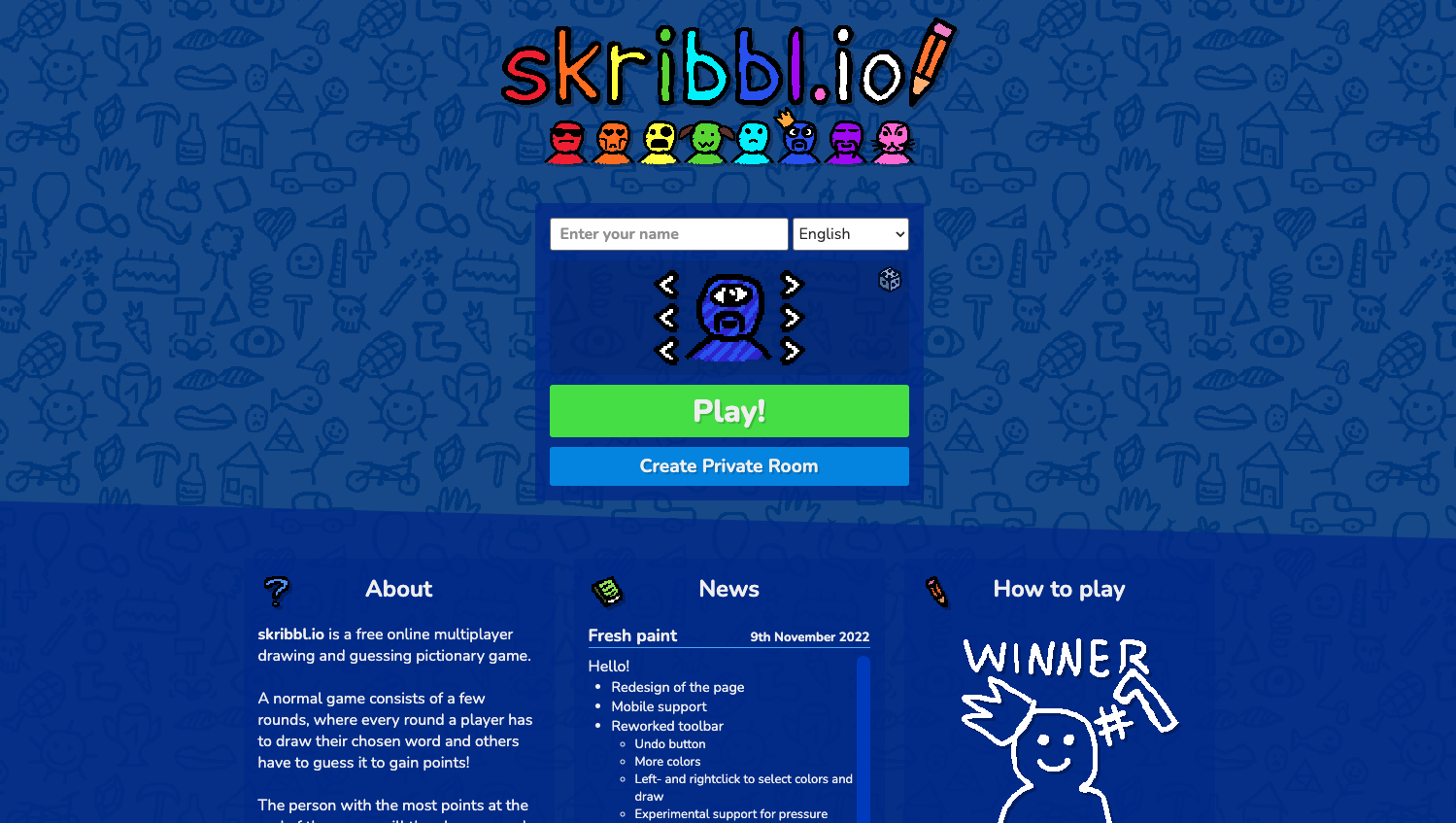This week, I played skribbl.io by ticedev (Mel) on a desktop web browser. It has an intended audience of people (perhaps ages ~10 and up) who have access to browsers/the internet and enjoy Pictionary.

skribbl.io allows 2-20 players and uses multilateral competition as its interaction pattern since players individually accumulate points. An important resource is time, as indicated by a countdown for each part, and the number of rounds limits the overall time players have. The objective is to accumulate the most points, which is accomplished by racing against/finding the solution before the other players by guessing what each drawing is the fastest.
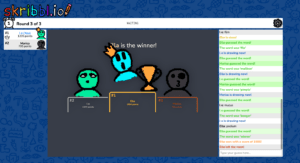
The theme of skribbl.io is simplicity and hand-drawn/sketchiness, with unpolished and quick drawings. It uses an online canvas and chat system for guessing, as well as blanks that indicate how many letters are in the word.
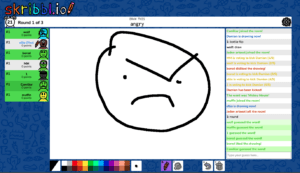
It intends to tap into fellowship and a bit of expression as types of fun, where there must be some form of interaction/interpretation between the drawer and guessers, and the drawer expresses their ideas. It succeeds because interpretations among players occur, and players express their ideas to some extent. However, it might fail because players do not directly work together, and the ability to express by drawing with a mouse/trackpad on a browser is limited/variable. For example, I played in both a private and a public room. I ran into more issues with the game flow in public; although some players interacted with each other through the chat, it was different compared to playing with friends when we were all on FaceTime and interacted with each other beyond the chat. While playing in public, I witnessed some sort of computerized drawing rather than a person drawing by hand. The fact that the game allows these “unfair” advantages was perhaps a fail.
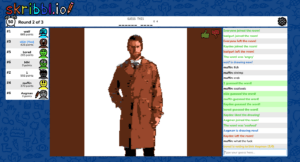
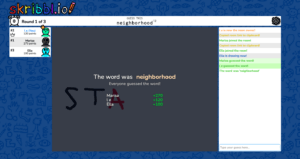
The graphic design connects directly to the theme of simplicity/unpolishedness because the designs of the avatars and website background are all very hand-drawn and not processed. In terms of types of fun, the graphic design also encourages expression because all the elements on the page look very hand-drawn, and people may feel more inclined to engage with each other because they can see everyone’s unique avatars and chat guesses.
skribbl.io is similar to Pictionary, Charades, and Telestrations because all include elements of drawing or some form of expression, paired with an element of guessing. skribbl.io is unique because it is played on a browser, with the ability to both join public games and create private rooms.
The feature of public play is one that may lead to concerns, especially when considering the potential for abuse. The game does not seem to handle abuse, as the bottom of the home site states, “The owner of this site is not responsible for any user generated content,” suggesting that any abusive content is not the game’s responsibility but only associated with the people that created it.
I would improve the game by introducing more safeguards to prevent unfair advantages such as computerized output described above, but also to prevent unsafe or inappropriate content. These safeguards would lead to new mechanics around the types of drawings, messages, and usernames that players could create because people would learn that certain types of content are not allowed. These would lead to different dynamics, where players would hopefully feel a safer or more comfortable environment, and there would be less feelings of unfairness or confusion about how other players are creating certain outputs.


